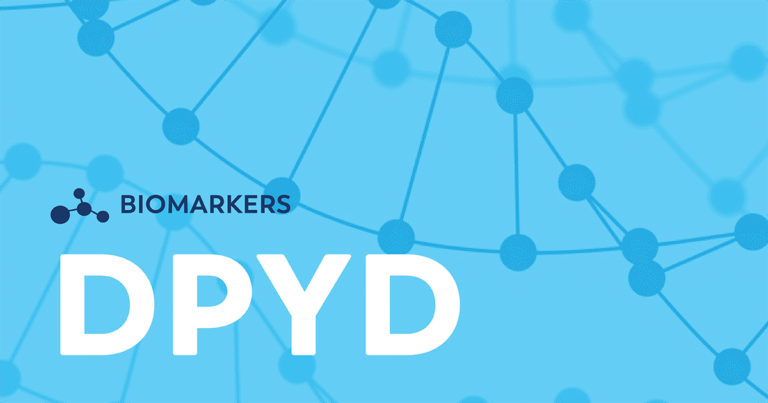Comparative Analysis of Pharmacogenomic Microarray Platforms for Clinical Use
Pharmacogenomic microarray platforms have transformed the field of genomic medicine by enabling personalized approaches to drug selection and dosing. These platforms utilize DNA microarray technology to profile gene expression and identify genetic variations that impact drug response. By integrating pharmacogenomics testing into clinical practice, healthcare professionals can deliver more targeted and effective treatments, leading to improved patient outcomes.
In this article, we will conduct a comparative analysis of various pharmacogenomic microarray platforms used in clinical genetics. We will explore their applications in personalized medicine, gene expression profiling, and the prediction of drug response. By reviewing the content, performance, and usability of these platforms, we aim to provide valuable insights for researchers and clinicians considering their implementation.
Genetic variations play a significant role in determining an individual’s response to medication. By using pharmacogenomic microarray platforms, healthcare professionals can identify these variations and tailor treatments accordingly, maximizing efficacy and minimizing adverse reactions. This approach, known as precision medicine, holds immense potential for revolutionizing healthcare practices and improving patient care.
Throughout this article, we will examine the benefits and limitations of pharmacogenomic microarray platforms, highlighting their potential impact on precision medicine and the challenges faced in translating genotype data into clinical recommendations. Additionally, we will discuss emerging technologies in this field and the importance of education and training for healthcare professionals to ensure the effective use of pharmacogenomic information in clinical practice.

Key Takeaways:
- Pharmacogenomic microarray platforms enable personalized medicine by identifying genetic variations that impact drug response.
- These platforms utilize DNA microarray technology to profile gene expression and predict individual drug response.
- Precision medicine, facilitated by pharmacogenomic testing, holds immense potential for improving patient outcomes.
- Comparative analysis of microarray platforms can help researchers and clinicians select the most suitable platform for their needs.
- Education and training for healthcare professionals are crucial in the successful implementation of pharmacogenomic information in clinical practice.
Advancements in Pharmacogenomic Microarray Platforms
The field of pharmacogenomics has witnessed remarkable advancements in recent years, particularly in the realm of microarray platforms. These platforms have undergone significant developments, incorporating the latest technologies in pharmacogenomics. One of the key advancements is the integration of high throughput genotyping techniques, which enable the analysis of single-nucleotide variants (SNVs) in the genome.
This progress in pharmacogenomic microarray platforms has revolutionized genetic analyses. Researchers and clinicians can conduct large-scale genetic analyses using these platforms, providing invaluable insights into individual drug response and genetic variations.
By leveraging high throughput genotyping, pharmacogenomic microarray platforms offer enhanced precision and efficiency in genetic analyses. They enable researchers to analyze numerous single-nucleotide variants simultaneously, expediting the discovery of clinically relevant pharmacogenetic information.
“Advancements in pharmacogenomic microarray platforms have enabled large-scale genetic analyses, enhancing our understanding of individual drug response and genetic variations.”
High Throughput Genotyping for Comprehensive Genetic Analyses
High throughput genotyping is a pivotal technological advancement in pharmacogenomic microarray platforms. It allows for the simultaneous analysis of hundreds of thousands to millions of single-nucleotide variants, enabling comprehensive genetic profiling within a short timeframe. This high-throughput capacity facilitates the detection of variances in the genome that may contribute to individual differences in drug response.
Pharmacogenomic microarray platforms with high-throughput capabilities enable researchers to identify genetic markers associated with drug efficacy, adverse reactions, and optimal dosage requirements. By analyzing a wide range of genetic variations, these platforms provide a comprehensive assessment of an individual’s genetic profile, empowering personalized medicine.
Improving Precision Medicine with Genetic Analyses
Advancements in pharmacogenomic microarray platforms have significant implications for precision medicine. These platforms enable healthcare providers to tailor treatment plans based on an individual’s unique genetic makeup, optimizing drug selection and dosing strategies. By incorporating pharmacogenomic information, clinicians can better predict treatment outcomes, improve patient safety, and enhance therapeutic efficacy.
The ability to analyze single-nucleotide variants and identify genetic variations associated with drug response allows clinicians to make informed decisions regarding medication selection. This personalized approach to medicine can minimize adverse drug reactions and improve patient outcomes.
| Advancements in Pharmacogenomic Microarray Platforms | Benefits | Limitations |
|---|---|---|
| High throughput genotyping |
|
|
| Precision medicine |
|
|
Role of Pharmacogenomic Microarray Platforms in Clinical Practice
Pharmacogenomic microarray platforms play a crucial role in advancing personalized medicine and improving patient outcomes in clinical practice. These platforms provide clinicians with valuable insights into an individual’s genetic makeup, enabling them to make informed decisions about drug selection and dosing. By analyzing genetic variations, pharmacogenomic microarray platforms help identify the likelihood of adverse drug reactions and predict treatment efficacy. This personalized approach to medicine allows healthcare professionals to tailor medication regimens to a patient’s specific genetic profile, maximizing the effectiveness of treatment.
Pharmacogenomic microarray platforms have revolutionized clinical practice by integrating genetic information into decision-making processes. Through the analysis of an individual’s genetic variations, these platforms provide clinicians with precise information that assists in selecting the most appropriate medication and dosage for each patient, minimizing the risk of adverse drug reactions and optimizing treatment outcomes.
“The integration of pharmacogenomic information into clinical practice has the potential to significantly improve patient care and the overall effectiveness of treatments.”
With the ability to identify genetic variations that impact drug response and treatment efficacy, pharmacogenomic microarray platforms offer a personalized approach to medicine. By tailoring treatment plans based on an individual’s unique genetic profile, clinicians can optimize therapeutic outcomes and minimize the risk of adverse events. This advancement in clinical practice not only enhances patient care but also contributes to the overall efficiency and cost-effectiveness of healthcare systems.
By harnessing the power of pharmacogenomic microarray platforms, healthcare professionals can ensure that patients receive medications that are tailored to their specific genetic makeup. This approach eliminates the trial-and-error process typically associated with drug selection and dosing, allowing for targeted and effective treatment from the start. Additionally, these platforms help identify individuals who may be at a higher risk of adverse drug reactions, guiding clinicians to choose alternative treatments or adjust dosages accordingly.
Overall, the role of pharmacogenomic microarray platforms in clinical practice is invaluable. By incorporating genetic information into treatment decisions, these platforms contribute to the advancement of personalized medicine, improved patient outcomes, and optimized healthcare resource utilization.
Comparison of Available Pharmacogenomic Microarray Platforms
A comprehensive comparison of available pharmacogenomic microarray platforms involves evaluating several factors. These factors include array content, genome-wide coverage, imputation quality, GWAS usability, and the presence of clinically relevant genes and pharmacogenetic genes. The performance and applicability of the platforms in different research and clinical settings are determined by these factors.
| Platform | Array Content | Genome-Wide Coverage | Imputation Quality | GWAS Usability | Clinically Relevant Genes | Pharmacogenetic Genes |
|---|---|---|---|---|---|---|
| Illumina | High | Wide | High | Yes | Yes | Yes |
| Affymetrix | High | Wide | High | Yes | Yes | Yes |
| Veracode ADME Core Panel | Focused | Limited | Medium | No | Yes | Yes |
| Pharmacoscan Assay | High | Wide | High | Yes | Yes | Yes |
| MassARRAY iPLEX platform | Focused | Limited | Medium | No | Yes | Yes |
| Luminex xMAP technology | Focused | Limited | Medium | No | Yes | Yes |
Based on the table above, both Illumina and Affymetrix platforms offer high-quality arrays with wide genome coverage, high imputation quality, and the usability of GWAS data. These platforms include clinically relevant genes and pharmacogenetic genes, making them suitable for various research and clinical applications. On the other hand, platforms such as the Veracode ADME Core Panel, MassARRAY iPLEX platform, and Luminex xMAP technology have a more focused array content, limited genome-wide coverage, and lower imputation quality. However, they still include clinically relevant and pharmacogenetic genes.
It is essential to consider the specific requirements of the research or clinical setting when choosing a pharmacogenomic microarray platform. A platform with a high array content, wide genome coverage, and high imputation quality would be advantageous for studies aiming to explore a broader range of genetic variations. However, a more focused platform may suffice if the research or clinical focus is on specific clinically relevant genes or pharmacogenetic genes.
Evaluating Array Content
The array content of a pharmacogenomic microarray platform refers to the specific genes, variants, and markers included in the array design. Platforms with a broad array content offer the ability to analyze a wide range of genetic variations. This is particularly relevant for research and clinical applications that require a comprehensive assessment of the genome. On the other hand, platforms with a focused array content may be suitable for studies focusing on specific genes or variants of interest.
Assessing Genome-Wide Coverage
The genome-wide coverage of a microarray platform determines the extent to which the entire genome is represented in the array design. Platforms with wide genome coverage can provide insights into genetic variations across the entire genome. This is crucial for comprehensive genomic analysis and identifying potential associations between genetic variants and drug response. Limited genome-wide coverage may be sufficient for studies targeting specific genomic regions or specific genes of interest.
Ensuring Imputation Quality
Imputation quality is a measure of the accuracy and reliability of imputed genetic data. Platforms with high imputation quality provide more reliable predictions of genetic variants that are not directly measured by the microarray. This allows researchers and clinicians to gain insights into a broader range of genetic variations. Platforms with medium imputation quality may still be suitable for certain applications, but their imputation results should be interpreted with caution.
Utilizing GWAS Usability
Platforms that include known genome-wide association study (GWAS) loci allow for the assessment of known associations between genetic variants and drug response or disease susceptibility. This feature enhances the potential for discovering novel associations in a research or clinical setting. However, platforms without GWAS loci can still provide valuable insights into individual genetic variations and their impact on drug response and clinical outcomes.
Inclusion of Clinically Relevant and Pharmacogenetic Genes
The inclusion of clinically relevant genes and pharmacogenetic genes in a microarray platform is essential for translating genomic findings into clinical practice. Clinically relevant genes are those associated with drug metabolism, drug targets, or disease susceptibility. Pharmacogenetic genes are specifically related to drug response and treatment outcomes. Platforms that include these genes enable researchers and clinicians to make informed decisions regarding drug selection, dosage, and treatment strategies.
Note: The table provided is for illustrative purposes only and does not represent a comprehensive list of all available pharmacogenomic microarray platforms. The selection and evaluation of platforms should be based on the specific research or clinical requirements.
Available Pharmacogenomic Microarray Platforms
Pharmacogenomic microarray platforms have revolutionized the field of genomics by providing valuable insights into genetic variations that impact drug response and treatment outcomes. There are several platforms available in the market that offer a range of features and capabilities for genotyping and exploring these variations. Some of the prominent pharmacogenomic microarray platforms include:
Illumina Platforms
Illumina is a leading provider of genomic solutions, offering a variety of platforms for pharmacogenomic research and clinical applications. The Veracode ADME Core Panel is an Illumina platform designed specifically for pharmacokinetic, pharmacodynamic, and drug metabolism studies. It offers comprehensive coverage of key genes involved in drug absorption, distribution, metabolism, and excretion.
Affymetrix Platforms
Affymetrix, now part of Thermo Fisher Scientific, is recognized for its microarray technology and array-based solutions. The Pharmacoscan Assay is an Affymetrix platform used for pharmacogenomic research and clinical applications. It offers a comprehensive panel of genetic markers that can be used to assess drug response and optimize patient treatment strategies.
MassARRAY iPLEX Platform
The MassARRAY iPLEX platform by Agena Bioscience is a highly flexible and scalable genotyping system. It utilizes matrix-assisted laser desorption/ionization time-of-flight mass spectrometry (MALDI-TOF MS) technology to provide accurate and high-throughput genotyping data. The platform enables the analysis of single nucleotide polymorphisms (SNPs), copy number variations (CNVs), and somatic mutations.
Luminex xMAP Technology
The Luminex xMAP technology is a bead-based multiplex system that allows simultaneous analysis of multiple targets in a single reaction. It offers a flexible and customizable approach to genotyping and gene expression profiling. The Luminex xMAP technology is commonly used in pharmacogenomics research to study gene-drug interactions and identify genetic variations associated with drug response.
These are just a few examples of the available pharmacogenomic microarray platforms. Each platform has its own unique strengths and capabilities, allowing researchers and clinicians to tailor their approach based on specific research and clinical requirements.
Now let’s take a closer look at the features and capabilities of these platforms in the following table:
Factors to Consider when Choosing a Pharmacogenomic Microarray Platform
When selecting a pharmacogenomic microarray platform, several important factors should be taken into account. These factors can influence the suitability of the platform for specific research requirements and determine its overall effectiveness and utility in clinical practice.
The key factors to consider include:
- Research requirements: Evaluate whether the platform aligns with the specific objectives and goals of your research. Consider the type of genetic variations and markers you need to analyze, as well as the desired level of genomic coverage.
- Customizable content: Assess the platform’s flexibility in terms of content customization. Determine whether it allows you to focus on specific genes or variants of interest, enabling a more targeted and efficient analysis.
- Imputation quality: Examine the accuracy and reliability of imputation methods employed by the platform. Imputation quality is crucial for inferring missing genotype data accurately, ensuring the robustness of your findings.
- Cost-effectiveness: Consider the cost associated with utilizing the microarray platform. Determine whether the benefits provided by the platform outweigh the expenses involved, considering factors such as data quality, scalability, and analysis capabilities.
- Collaboration opportunities: Evaluate the potential for collaboration with other researchers and institutions when using the platform. Assess whether the platform offers integration with existing databases, sharing capabilities, and collaborative tools, which can enhance the strength and impact of your research.
By carefully considering these factors, researchers and clinicians can make an informed decision when choosing a pharmacogenomic microarray platform. This decision will ensure that the selected platform aligns with their specific research requirements, provides customizable content for focused analysis, achieves high-quality imputation, is cost-effective, and offers collaboration opportunities to enhance the depth and breadth of the research.
Clinical Implementation of Pharmacogenomic Microarray Platforms
Pharmacogenomic microarray platforms are playing an increasingly prominent role in real-world clinical practice. This integration is driven by initiatives such as pre-emptive pharmacogenetics and programs like PG4KDS (Pre-emptive Pharmacogenetics), which aim to incorporate genetic testing into routine healthcare. To facilitate this implementation, clinicians can rely on guidelines provided by the Clinical Pharmacogenetics Implementation Consortium (CPIC) that offer evidence-based recommendations for the use of pharmacogenomic information in patient care.
“Incorporating genetic testing into clinical practice allows for a more personalized approach to medication selection and dosing, improving treatment outcomes and minimizing potential adverse drug reactions.”
The CPIC guidelines are developed through a rigorous process of reviewing existing literature, evaluating the strength of evidence, and reaching expert consensus on recommendations. These guidelines address various drug-gene pairs and provide clinicians with actionable information on pharmacogenomic variants that can influence drug response. By following these guidelines, healthcare professionals can make informed decisions based on patient genetic profiles, enhancing the precision and effectiveness of drug therapy.
In the clinical implementation of microarray platforms, it is crucial to consider factors such as the reliability of the platform, the validity and interpretability of the genetic data, and the practical feasibility of integrating genetic testing into existing healthcare systems. Successful clinical implementation requires collaboration among clinicians, geneticists, researchers, and other stakeholders to establish standardized protocols, ensure accurate reporting, and overcome potential barriers.
Benefits of Clinical Implementation of Microarray Platforms
| Benefits | Description |
|---|---|
| Personalized Medicine | Integration of genetic testing enables tailored treatment plans based on individual genetic profiles, optimizing therapy outcomes. |
| Improved Drug Selection | Access to pharmacogenomic information helps healthcare professionals choose medications that are most likely to be effective and safe for each patient. |
| Reduced Adverse Drug Reactions | Identification of genetic variations associated with adverse drug reactions allows for proactive measures to minimize risks. |
| Enhanced Clinical Decision-making | Genetic information aids in the selection of appropriate drug dosages and treatment strategies, resulting in optimized therapeutic outcomes. |
| Improved Patient Safety | By identifying patients at higher risk for adverse reactions, clinicians can prevent potential harm and improve overall patient safety. |
The clinical implementation of pharmacogenomic microarray platforms has the potential to revolutionize patient care by incorporating genetic information into routine clinical decision-making. By leveraging the power of genetic testing and following evidence-based guidelines, clinicians can enhance treatment outcomes, minimize adverse drug reactions, and provide more personalized and effective care to their patients.
Challenges and Solutions in Translating Genotype Data from Pharmacogenomic Microarray Platforms
Translating genotype data from pharmacogenomic microarray platforms into clinical pharmacogenetic recommendations poses certain challenges. These challenges include:
- Data analysis and interpretation: The vast amount of data generated by microarray platforms requires sophisticated algorithms and tools for accurate analysis and interpretation. The complex nature of genetic variations, including single nucleotide polymorphisms (SNPs) and Copy Number Variations (CNVs), adds to the complexity of data analysis.
- Biobank participation: To establish robust clinical recommendations, large-scale biobank participation is necessary. Biobanks provide access to diverse genetic data that can enhance the accuracy and generalizability of pharmacogenomic findings.
- Clinical implementation: Successfully implementing pharmacogenomic testing in clinical practice is challenging. It requires overcoming barriers such as limited awareness among healthcare professionals, integrating genetic test results into electronic health records, and incorporating pharmacogenomic guidelines into routine patient care.
Addressing these challenges requires collaboration among researchers, clinicians, and stakeholders to develop efficient and reliable strategies. Researchers need to continue refining data analysis methods, leveraging artificial intelligence and machine learning algorithms to identify relevant genetic variations and translate them into actionable recommendations. Biobanks should promote collaboration and data sharing to enhance the representativeness and diversity of genetic data, leading to more accurate clinical recommendations. Healthcare systems should invest in education and training programs to equip healthcare professionals with the necessary knowledge and skills to interpret and implement pharmacogenomic test results effectively.
“Translating genotype data from pharmacogenomic microarray platforms into clinical pharmacogenetic recommendations requires a multidisciplinary approach, combining expertise in data analysis, genetics, and clinical implementation.”
Solutions in Translating Genotype Data
Researchers and clinicians employ various strategies to address the challenges in translating genotype data:
- Development of standardized guidelines: Organizations such as the Clinical Pharmacogenetics Implementation Consortium (CPIC) and the Pharmacogenomics Research Network (PGRN) develop guidelines for pharmacogenomic testing and drug dosing recommendations. These guidelines help clinicians interpret and apply genotype data in medical decision-making.
- Collaborative research networks: Researchers establish networks that facilitate collaboration among different institutions and biobanks. These networks enable the pooling and sharing of data, leading to larger sample sizes and more robust findings.
- Technology advancements: Continuous advancements in data analysis tools and genomic sequencing technologies contribute to improving the accuracy and efficiency of translating genotype data. Integrated platforms that combine different data sources and analysis tools streamline the process.
By implementing these solutions, researchers and clinicians can overcome the challenges in translating genotype data, paving the way for more personalized and effective pharmacogenomic interventions.
| Challenges | Solutions |
|---|---|
| Data analysis and interpretation | Continuous refinement of analysis methods and the use of advanced algorithms Integration of artificial intelligence and machine learning in data analysis |
| Biobank participation | Promoting collaboration among biobanks and data sharing Ensuring diverse and representative genetic data in biobanks |
| Clinical implementation | Development of standardized guidelines for pharmacogenomic testing Education and training programs for healthcare professionals Integration of genetic test results into electronic health records |
Emerging Technologies in Pharmacogenomic Microarray Platforms
The field of pharmacogenomic microarray platforms is constantly evolving, with emerging technologies offering new possibilities for enhanced genotyping and more comprehensive genomic profiling. These technologies not only improve the detection of genetic variations but also pave the way for more precise and personalized healthcare.
Single-Molecule Sequencing
One of the emerging technologies in pharmacogenomic microarray platforms is single-molecule sequencing. This technology enables the direct sequencing of individual DNA molecules, providing a high level of accuracy and sensitivity. By eliminating the need for amplification, single-molecule sequencing reduces bias and improves the detection of genetic variations, including single-nucleotide polymorphisms (SNPs) and copy number variations (CNVs). This technology holds great promise for advancing our understanding of pharmacogenomics and its role in personalized medicine.
Long-Read Sequencing
Another emerging technology is long-read sequencing, which enables the analysis of large DNA fragments up to tens of kilobases in length. This is in contrast to short-read sequencing technologies that typically generate reads between 100 and 300 base pairs. Long-read sequencing provides more comprehensive coverage of the genome, allowing for the identification of complex genetic variations, such as structural rearrangements and repeat expansions. This technology is particularly valuable in pharmacogenomics, where the detection of structural variants and other large-scale genomic alterations is crucial for understanding drug response variability.
Structural Variant Analysis
Structural variants, including deletions, duplications, inversions, and translocations, play a significant role in genetic diversity and contribute to disease susceptibility and response to pharmacotherapy. Emerging technologies in pharmacogenomic microarray platforms allow for more accurate detection and analysis of structural variants. These advancements enable researchers and clinicians to evaluate the impact of structural variants on drug response and fine-tune treatment strategies accordingly.
By leveraging these emerging technologies in pharmacogenomic microarray platforms, scientists and healthcare professionals can enhance their understanding of the genetic basis of drug response and optimize treatment approaches for individual patients. The integration of single-molecule sequencing, long-read sequencing, and structural variant analysis holds tremendous potential for advancing the field of pharmacogenomics and ultimately improving patient outcomes.
| Emerging Technologies | Key Features |
|---|---|
| Single-Molecule Sequencing | Direct sequencing of individual DNA molecules Improved accuracy and sensitivity Enhanced detection of genetic variations Reduced bias |
| Long-Read Sequencing | Analysis of large DNA fragments More comprehensive coverage of the genome Identification of complex genetic variations Detection of structural rearrangements and repeat expansions |
| Structural Variant Analysis | Accurate detection and analysis of structural variants Evaluation of their impact on drug response Fine-tuning of treatment strategies |
These emerging technologies in pharmacogenomic microarray platforms are poised to revolutionize the field of personalized medicine by providing unprecedented insights into the genetic basis of drug response. As researchers continue to explore their potential and refine their applications, it is certain that these technologies will play a key role in advancing precision medicine and improving patient care.
Education and Training in Pharmacogenomics for Healthcare Professionals
Education and training play a vital role in equipping healthcare professionals with the knowledge and skills necessary to effectively implement genetic testing and integrate pharmacogenomic information into clinical practice. To ensure safe and efficient use of pharmacogenomics, initiatives such as the European Pharmacogenomics Clinical Implementation Project (Ubiquitous Pharmacogenomics) have been established. This project focuses on improving education, training, and awareness among healthcare professionals.
The European Pharmacogenomics Clinical Implementation Project aims to provide healthcare professionals with comprehensive education and training in pharmacogenomics. By increasing their knowledge and understanding of genetic testing and its clinical implementation, healthcare professionals can make informed decisions and deliver personalized patient care.
“Education is the most powerful weapon which you can use to change the world.” – Nelson Mandela
The project offers resources and training programs tailored to the unique needs of healthcare professionals. These programs cover a range of topics including the fundamentals of pharmacogenomics, interpretation of genetic test results, and the practical applications of pharmacogenomic information in clinical settings.
Furthermore, the project promotes collaboration and knowledge-sharing among healthcare professionals, researchers, and industry experts. By fostering a multidisciplinary approach, professionals can work together to overcome challenges and develop standardized practices for the integration of pharmacogenomic information into healthcare systems.
“Alone we can do so little; together we can do so much.” – Helen Keller
| Benefits of Education and Training in Pharmacogenomics for Healthcare Professionals | Limitations of Education and Training in Pharmacogenomics for Healthcare Professionals |
|---|---|
|
|
Education and training in pharmacogenomics empower healthcare professionals to harness the potential of genetic testing and pharmacogenomic data. With the support of initiatives like the European Pharmacogenomics Clinical Implementation Project, healthcare professionals can enhance patient care and contribute to the advancement of precision medicine.
Benefits and Limitations of Pharmacogenomic Microarray Platforms
Pharmacogenomic microarray platforms offer significant benefits in the field of precision medicine. These platforms allow for the personalization of medicine by considering an individual’s genetic makeup and its impact on drug selection and dosing. By analyzing genetic variations, these platforms can improve drug efficacy and reduce the occurrence of adverse drug reactions. Additionally, microarray platforms can be cost-effective compared to other genetic testing methods, making them accessible to a wider range of patients.
However, it is important to acknowledge the limitations of pharmacogenomic microarray platforms. One limitation is the limited genomic coverage they provide. While these platforms are capable of analyzing specific genetic markers related to drug response, they may not capture the entire genome. This limited coverage can potentially miss important genetic variants that may influence drug metabolism or response.
Another limitation of microarray platforms is the possibility of false-positive or false-negative results. As with any diagnostic tool, there is always a risk of incorrect interpretation or analysis. False-positive results may lead to unnecessary interventions or medication adjustments, while false-negative results may overlook important genetic variations that could impact treatment outcomes.
“Pharmacogenomic microarray platforms offer the ability to personalize medicine, improve drug selection and dosing, and potentially reduce adverse drug reactions.”
“However, these platforms have limitations such as limited genomic coverage and the potential for false-positive or false-negative results.”
It is crucial to recognize that the field of pharmacogenomics is still evolving, and there is a need for further validation and clinical implementation of microarray platforms. Ongoing research and collaboration are necessary to optimize the accuracy and utility of these platforms in real-world clinical practice.

Despite their limitations, pharmacogenomic microarray platforms have proven to be valuable tools in precision medicine. The benefits they offer in terms of personalized treatment and improved drug selection outweigh the limitations when used judiciously and in conjunction with other clinical considerations. Continued advancements in technology and research will further enhance the utility and accuracy of these platforms, making them indispensable in the field of pharmacogenomics.
Conclusion
Pharmacogenomic microarray platforms have revolutionized the field of precision medicine, offering personalized drug selection and dosing based on individual genetic variations. These platforms provide valuable insights into a patient’s genetic profile and its impact on drug response, enabling clinicians to make informed treatment decisions.
However, it is essential to carefully consider the selection of the appropriate microarray platform based on specific research and clinical requirements. Factors such as array content, genome-wide coverage, imputation quality, and the inclusion of clinically relevant genes must be weighed to ensure the platform’s effectiveness in a given setting.
Continued advancements in pharmacogenomic microarray platforms, along with collaborations among researchers, clinicians, and stakeholders, will contribute to the widespread adoption of pharmacogenomics in clinical practice. This will further enhance precision medicine and genetic testing, improving patient outcomes and guiding personalized treatment plans in various medical specialties.
FAQ
What are pharmacogenomic microarray platforms?
Pharmacogenomic microarray platforms are advanced genetic testing technologies that analyze single-nucleotide variants (SNVs) in the genome. These platforms enable the analysis of large-scale genetic variations and their impact on drug response and treatment outcomes.
What is the role of pharmacogenomic microarray platforms in clinical practice?
Pharmacogenomic microarray platforms play a crucial role in clinical practice by providing valuable insights into an individual’s genetic profile and its influence on drug selection, dosing, and treatment efficacy. These platforms help identify genetic variations associated with adverse drug reactions and can guide clinicians in tailoring medication regimens to a patient’s unique genetic makeup.
What factors should be considered when choosing a pharmacogenomic microarray platform?
When choosing a pharmacogenomic microarray platform, it is important to consider factors such as specific research requirements, the ability to customize the platform’s content, imputation quality, cost-effectiveness, and potential for collaboration with other researchers.
What are some examples of available pharmacogenomic microarray platforms?
Some prominent examples of pharmacogenomic microarray platforms include Illumina platforms like Veracode ADME Core Panel, Affymetrix platforms like Pharmacoscan Assay, MassARRAY iPLEX platform, and Luminex xMAP technology. These platforms offer various features for genotyping and exploring genetic variations.
How are genetic testing results from pharmacogenomic microarray platforms translated into clinical recommendations?
Translating genotype data from pharmacogenomic microarray platforms into clinical pharmacogenetic recommendations can be challenging. It requires data analysis and interpretation, large-scale biobank participation for robust clinical recommendations, and successful clinical implementation of pharmacogenomic testing.
What are some emerging technologies in pharmacogenomic microarray platforms?
Emerging technologies in pharmacogenomic microarray platforms include single-molecule sequencing, long-read sequencing, and structural variant analysis. These technologies offer new opportunities for enhanced genotyping, improved detection of genetic variations, and more comprehensive genomic profiling.
How can healthcare professionals receive education and training in pharmacogenomics?
Education and training in pharmacogenomics for healthcare professionals is crucial for the successful integration of genetic testing and pharmacogenomic information into clinical practice. Initiatives like the European Pharmacogenomics Clinical Implementation Project aim to improve knowledge and awareness among healthcare professionals.
What are the benefits and limitations of pharmacogenomic microarray platforms?
Pharmacogenomic microarray platforms offer the benefits of personalized medicine, improved drug selection and dosing, and potentially reduced adverse drug reactions. However, they have limitations such as limited genomic coverage, the potential for false-positive or false-negative results, and the need for further validation and clinical implementation.





